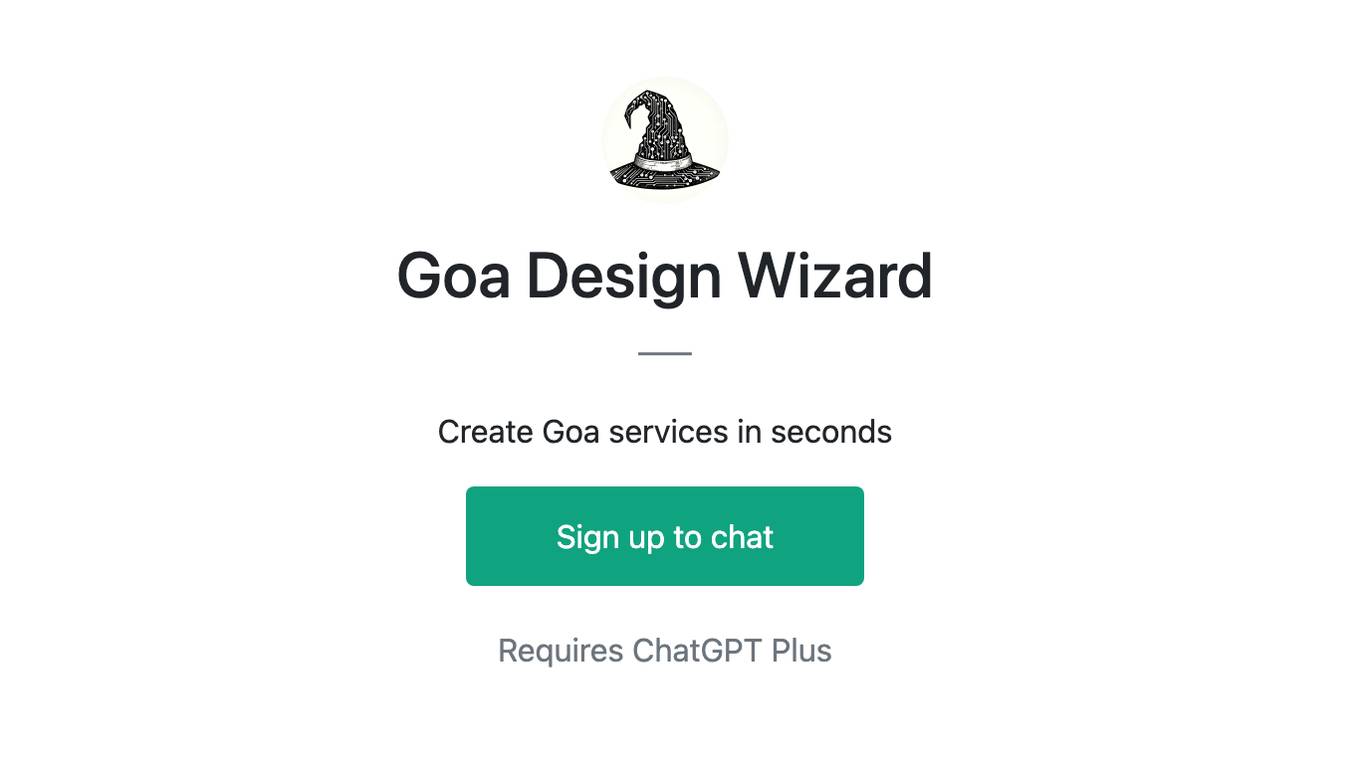Best AI tools for< Create Cloud Ide >
20 - AI tool Sites

Deploya
Deploya is an AI-powered platform that allows users to create production-ready websites in seconds. By leveraging cutting-edge AI models, Deploya optimizes websites for performance and user experience. Users can simply describe their requirements, and Deploya will generate a website accordingly. The platform also offers features like automatic image selection, quick publishing, and flexible pricing options. Deploya stands out for its AI-driven web design capabilities and efficient website deployment process.
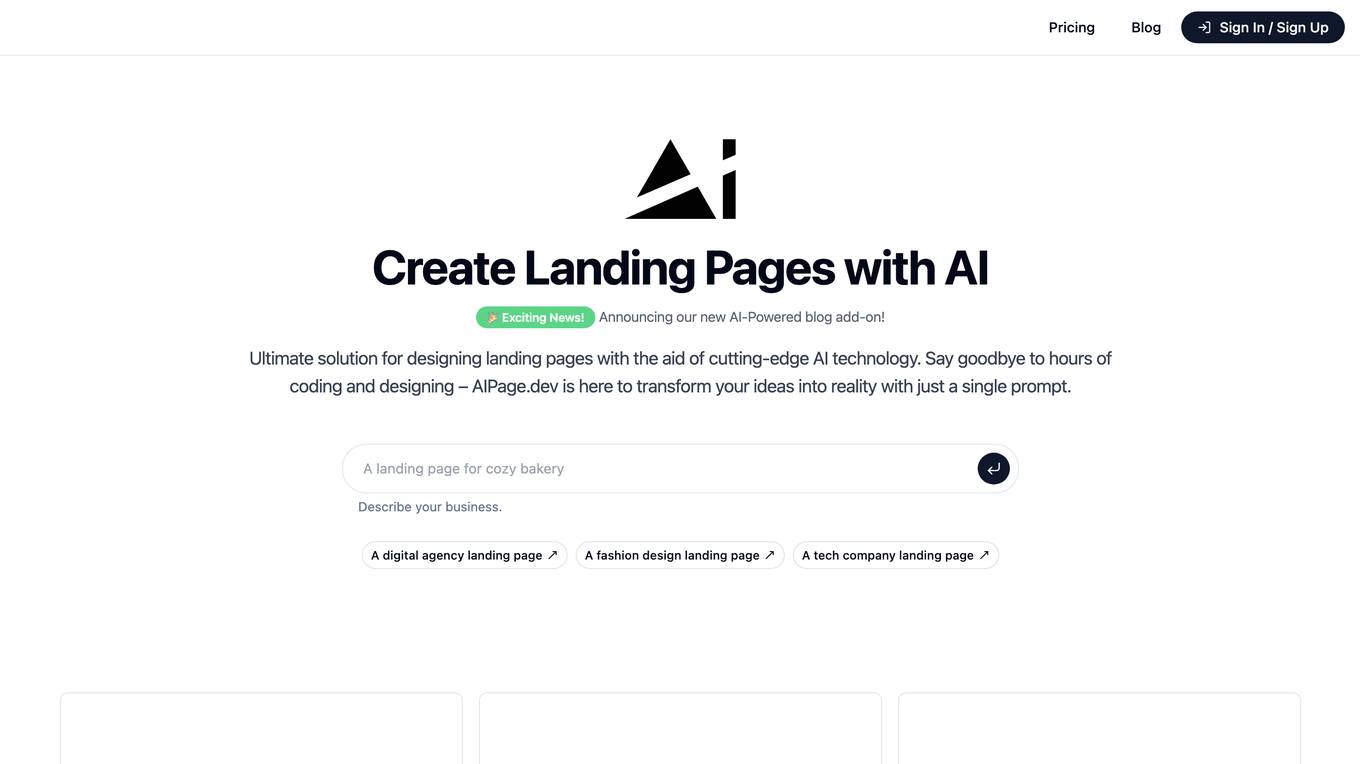
AIPage.dev
AIPage.dev is an AI-powered landing page generator that simplifies web development by utilizing cutting-edge AI technology. It allows users to create stunning landing pages with just a single prompt, eliminating the need for hours of coding and designing. The platform offers features like AI-driven design, intuitive editing interface, seamless cloud deployment, rapid development, effortless blog post creation, unlimited hosting for blog posts, lead collection, and seamless integration with leading providers. AIPage.dev aims to transform ideas into reality and empower users to showcase their projects and products effectively.

BugFree.ai
BugFree.ai is an AI-powered platform designed to help users practice system design and behavior interviews, similar to Leetcode. The platform offers a range of features to assist users in preparing for technical interviews, including mock interviews, real-time feedback, and personalized study plans. With BugFree.ai, users can improve their problem-solving skills and gain confidence in tackling complex interview questions.

AI Slide Maker
AI Slide Maker is an innovative tool that utilizes artificial intelligence to create visually appealing and professional presentations in a matter of minutes. With its advanced algorithms, the application can analyze content, suggest relevant design templates, and generate slides automatically. Users can simply input their text and images, and the AI Slide Maker will take care of the rest, saving time and effort. Whether for business meetings, educational purposes, or personal projects, this tool streamlines the presentation creation process and ensures high-quality results.

MacaiLabs Creative Studio
MacaiLabs Creative Studio is a fullstack creative studio that combines marketing, design, and social media into cohesive solutions. They focus on creating engaging visualizations that drive real business results by leveraging creative intuition and advanced AI tools. The studio collaborates with its own AI agents to accelerate iterations, test ideas, and deliver campaigns and applications tailored to the actual needs of the audience. MacaiLabs aims to create unique and standout solutions for their clients.

Pika
Pika is an AI-powered video creation platform that allows users to create videos from text, images, or existing videos. With Pika, users can create memes, movies, and other types of videos quickly and easily. Pika is a cloud-based platform that is accessible from any device with an internet connection. Pika is a powerful tool that can be used by anyone, regardless of their skill level. Pika is the perfect tool for anyone who wants to create engaging and shareable videos.

Cloud Observability Middleware
The website provides Full-Stack Cloud Observability services with a focus on Middleware. It offers comprehensive monitoring and analysis tools to help businesses optimize their cloud infrastructure performance. The platform enables users to gain insights into their middleware applications, identify bottlenecks, and improve overall system efficiency.

RunDiffusion
RunDiffusion is a cloud-based platform that provides access to a suite of open-source AI tools, including Automatic1111, Fooocus, ComfyUI, and more. These tools enable users to generate images, videos, and other creative content using artificial intelligence. RunDiffusion offers a variety of features, including a user-friendly interface, a wide range of models to choose from, and the ability to collaborate with other users. The platform is suitable for both hobbyists and professionals, and it can be used for a variety of tasks, such as creating marketing materials, generating product ideas, and developing new artistic concepts.

Ink With AI
Ink With AI is an AI tattoo design generator that allows users to create unique tattoo designs using artificial intelligence technology. Users can describe their dream tattoo, select an art style, and watch as the AI brings their description to life in a personalized design. The application is free for the first two generations, with each generation producing four designs. Ink With AI is developed by solo entrepreneur and cloud solutions architect Eray Alakese. The platform aims to provide a seamless and creative experience for tattoo enthusiasts looking for bespoke designs.

Eraser
Eraser is an AI co-pilot for technical design that offers a range of features to create diagrams, codebase diagrams, design docs, and technical documentation at the speed of thought. It provides integrations with popular platforms like Confluence, Notion, VS Code, and GitHub, making it a versatile tool for enterprise architects, DevOps, technology consultants, and software engineers. Eraser ensures accurate and consistent designs faster, with beautiful default visuals and a focus on usability. The tool allows visualization of cloud architecture, entity relationships, flow charts, and sequences, enhancing documentation creation and workflow efficiency. Eraser is known for its version history, performance, workflow integration, markdown support, export capabilities, and Github integration, making it a preferred choice for technical teams globally.

VeroCloud
VeroCloud is a platform offering tailored solutions for AI, HPC, and scalable growth. It provides cost-effective cloud solutions with guaranteed uptime, performance efficiency, and cost-saving models. Users can deploy HPC workloads seamlessly, configure environments as needed, and access optimized environments for GPU Cloud, HPC Compute, and Tally on Cloud. VeroCloud supports globally distributed endpoints, public and private image repos, and deployment of containers on secure cloud. The platform also allows users to create and customize templates for seamless deployment across computing resources.
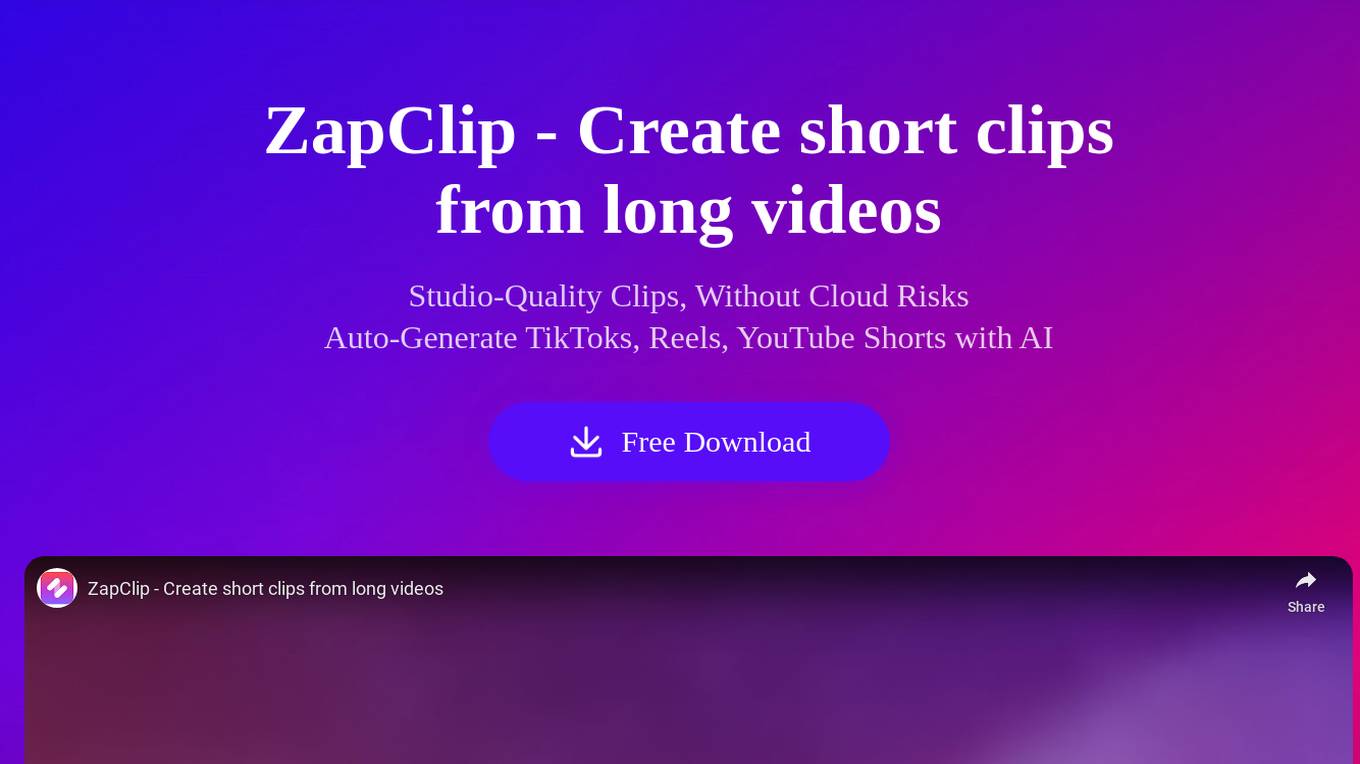
ZapClip
ZapClip is an AI-powered video editing tool that allows users to create short clips from long videos with ease. It offers studio-quality clips without cloud risks, auto-generates TikToks, Reels, and YouTube Shorts, and enables users to slice, edit, and repurpose YouTube content for TikTok. The tool automatically identifies the best moments in videos, customizes clips with captions and effects, and provides performance analysis for content refinement. ZapClip is known for its secure, fast, and professional video clipping capabilities for social media success, making it a valuable asset for content creators, small businesses, and digital agencies.

Evolphin
Evolphin is a leading AI-powered platform for Digital Asset Management (DAM) and Media Asset Management (MAM) that caters to creatives, sports professionals, marketers, and IT teams. It offers advanced AI capabilities for fast search, robust version control, and Adobe plugins. Evolphin's AI automation streamlines video workflows, identifies objects, faces, logos, and scenes in media, generates speech-to-text for search and closed captioning, and enables automations based on AI engine identification. The platform allows for editing videos with AI, creating rough cuts instantly. Evolphin's cloud solutions facilitate remote media production pipelines, ensuring speed, security, and simplicity in managing creative assets.

Bubble
Bubble is a no-code application development platform that allows users to build and deploy web and mobile applications without writing any code. It provides a visual interface for designing and developing applications, and it includes a library of pre-built components and templates that can be used to accelerate development. Bubble is suitable for a wide range of users, from beginners with no coding experience to experienced developers who want to build applications quickly and easily.

Global Nodes
Global Nodes is a global leader in innovative solutions, specializing in Artificial Intelligence, Data Engineering, Cloud Services, Software Development, and Mobile App Development. They integrate advanced AI to accelerate product development and provide custom, secure, and scalable solutions. With a focus on cutting-edge technology and visionary thinking, Global Nodes offers services ranging from ideation and design to precision execution, transforming concepts into market-ready products. Their team has extensive experience in delivering top-notch AI, cloud, and data engineering services, making them a trusted partner for businesses worldwide.

Voicetapp
Voicetapp is a powerful cloud-based artificial intelligence software that helps you automatically convert audio to text with up to 100% accuracy. It supports over 170 languages and dialects, allowing you to quickly and accurately transcribe speech from audio and video files. Voicetapp also offers features such as speaker identification, live transcription, and multiple input formats, making it a versatile tool for various use cases.

Kwirk.io
Kwirk.io is a cloud-based AI-powered writing assistant that helps users create high-quality content quickly and efficiently. It offers a range of features, including automated text generation, grammar and style checking, plagiarism detection, and real-time feedback. Kwirk.io is designed to help users save time and improve the quality of their writing, making it an ideal tool for students, professionals, and anyone who needs to create written content.

Shaped
Shaped is a cloud-based platform that provides APIs and tools for building and deploying ranking systems. It offers a variety of features to help developers quickly and easily create and manage ranking models, including a multi-connector SQL interface, a real-time feature store, and a library of pre-built models. Shaped is designed to be scalable, cost-efficient, and easy to use, making it a great option for businesses of all sizes.

DataLab
DataLab is a data notebook that smartly leverages generative AI technology to enable users to 'chat with their data'. It features a powerful IDE for analysis, and seamlessly transforms work into shareable reports. The application runs in a cloud-hosted environment with support for R/Python, SQL, and various data science packages. Users can connect to external databases, collaborate in real-time, and utilize an AI Assistant for code generation and error correction.

Video Silence Remover
Video Silence Remover is a free AI-powered video editing tool that helps users trim silent and quiet parts of their videos quickly and efficiently. The tool operates on the cloud, allowing users to go from a raw video to a first cut edit in minutes. It supports MP4 and other video files, enabling users to create AI-edited and captioned shorts and reels from full-form videos. Video Silence Remover is ideal for content creators, video editors, social media managers, course creators, and anyone looking to enhance video quality with minimal time investment.
1 - Open Source AI Tools

core
OpenSumi is a framework designed to help users quickly build AI Native IDE products. It provides a set of tools and templates for creating Cloud IDEs, Desktop IDEs based on Electron, CodeBlitz web IDE Framework, Lite Web IDE on the Browser, and Mini-App liked IDE. The framework also offers documentation for users to refer to and a detailed guide on contributing to the project. OpenSumi encourages contributions from the community and provides a platform for users to report bugs, contribute code, or improve documentation. The project is licensed under the MIT license and contains third-party code under other open source licenses.
20 - OpenAI Gpts

Cloudy with a Chance of Creation
Share a shape and 3 colours and I will generate a beautiful generative art.

Quotes CloudArt
I can convert your favorite quotes into a word cloud with a specified shape.

🌟Technical diagrams pro🌟
Create UML for flowcharts, Class, Sequence, Use Case, and Activity diagrams using PlantUML. System design and cloud infrastructure diagrams for AWS, Azue and GCP. No login required.

Javascript Cloud services coding assistant
Expert on google cloud services with javascript

TMF Cloud Diagram Assistant
Specializes in PlantUML diagrams with structured API and microservice groups

Commerce Cloud Guru
Professional voice for SFCC B2C Commerce Cloud expertise. 🔒 Unlock the full potential of B2C Commerce Cloud

SF Sales Cloud Topic Solver
Expert in solving Salesforce Sales Cloud problems with use cases.
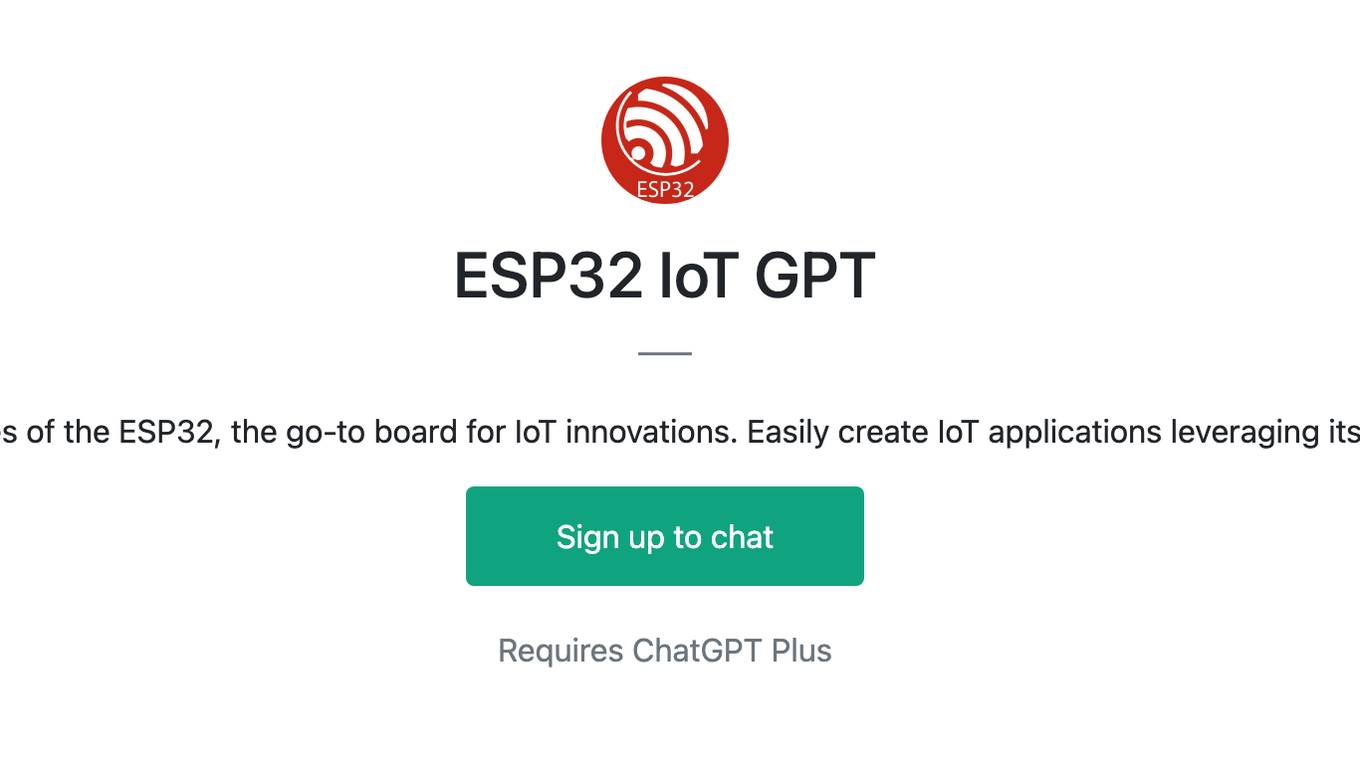
ESP32 IoT GPT
Discover the versatile capabilities of the ESP32, the go-to board for IoT innovations. Easily create IoT applications leveraging its Wi-Fi and BLE functionalities.

Word Collage
Create a collage image using words. Copyright (C) 2023, Sourceduty - All Rights Reserved.
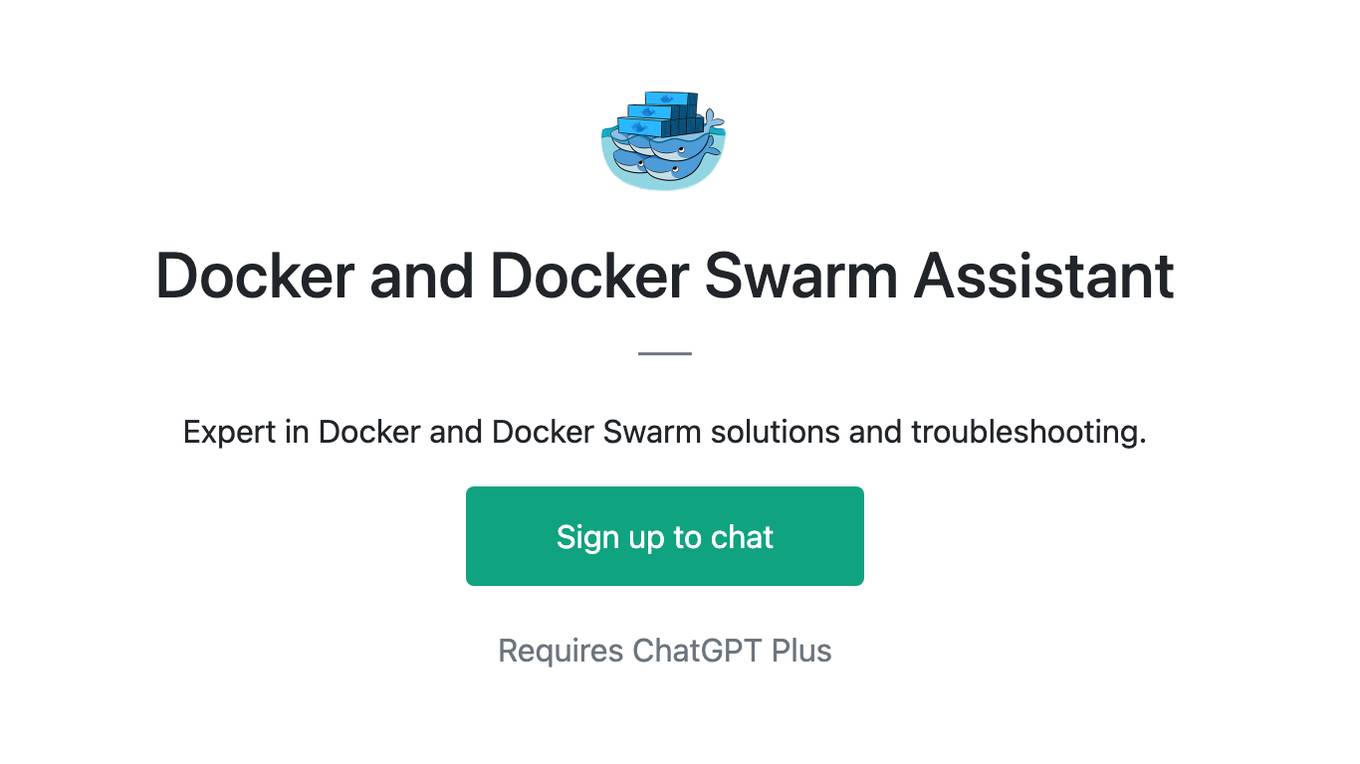
Docker and Docker Swarm Assistant
Expert in Docker and Docker Swarm solutions and troubleshooting.

